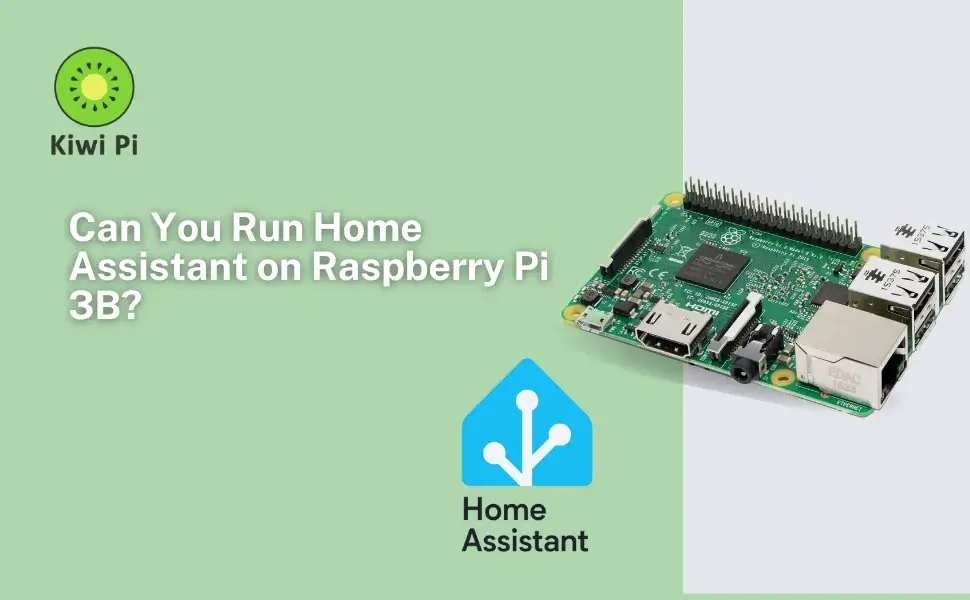

Home Assistant is a widely used open-source platform for home automation, providing extensive customization options for smart home enthusiasts. Can you run Home Assistant on a Raspberry Pi 3B? The simple answer is yes, but you should be aware of performance constraints and limitations. This guide will examine the feasibility, installation steps, and tips for optimizing performance to deliver a smooth experience on the Raspberry Pi 3B.
The Raspberry Pi 3B, released in 2016, features a 1.2GHz quad-core ARM Cortex-A53 processor, 1GB of RAM, and integrated Wi-Fi and Bluetooth. Although it is not the newest model, it still serves as a practical option for running Home Assistant, particularly for smaller smart home setups.

Home Assistant is lightweight compared to many other home automation platforms, but the Raspberry Pi 3B’s hardware can become a bottleneck with extensive use. Key factors that influence performance include:
Number of Devices: The Pi 3B manages 10-20 devices effectively, but performance might decline with additional devices.
Add-ons & Integrations: Running multiple add-ons such as databases or MQTT brokers increases CPU and RAM usage.
SD Card Speed: A slow SD card can cause sluggish performance; using an SSD via USB is recommended.
| Feature | Raspberry Pi 3B | Raspberry Pi 4B (2GB) | Raspberry Pi 5 |
|---|---|---|---|
| CPU | 1.2GHz Quad-Core | 1.5GHz Quad-Core | 2.4GHz Quad-Core |
| RAM | 1GB | 2GB | 4GB+ |
| USB Ports | 4x USB 2.0 | 2x USB 3.0, 2x USB 2.0 | 2x USB 3.0, 2x USB 2.0 |
| Home Assistant Performance | Basic setups only | Handles medium setups | Optimal for advanced setups |
Upgrading to a more powerful single-board computer can be beneficial for larger smart home systems.
Installing Home Assistant on a Raspberry Pi 3B is simple, but following best practices ensures reliability.
Home Assistant offers multiple installation options:
Home Assistant OS: A dedicated OS optimized for Raspberry Pi.
Docker: Lightweight containerized installation.
Manual Python Setup: For advanced users.
For most users, Home Assistant OS is the simplest and most reliable option.
Before installation:
Use a high-quality SD card (Class 10 or better) or USB SSD.
Ensure stable power (use a 2.5A power supply).
Enable SSH if remote access is needed.
Use tools such as Raspberry Pi Imager to flash the Home Assistant OS image onto your storage device. Insert the drive into the Pi, turn it on, and wait for it to initialize, which may take up to 20 minutes.
To maximize performance, follow these optimization tips:
Use an External SSD: Reduces wear and improves speed.
Limit Add-ons: Avoid unnecessary background services.
Enable ZRAM: Compresses RAM usage for better multitasking.
Monitor CPU and RAM usage using Home Assistant’s System Monitor. If the Pi experiences difficulties, try disabling some integrations or upgrading the hardware.
Yes, you can run Home Assistant on a Raspberry Pi 3B, but with some limitations. It’s suitable for small to medium smart home setups, although performance might slow down with extensive automation. For larger deployments, a Raspberry Pi 4B or 5 is recommended. By following best practices - such as using an SSD and optimizing add-ons - you can ensure a stable and responsive Home Assistant experience on the Pi 3B.